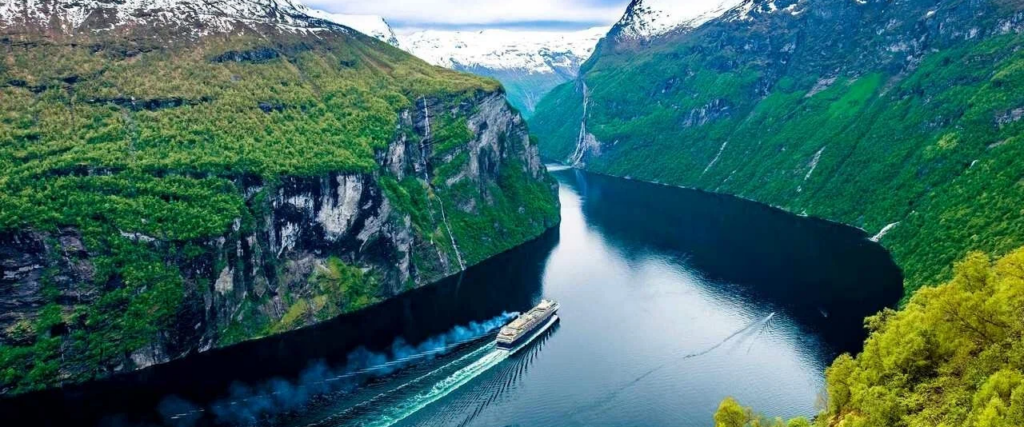Norway’s fjords stand as some of the most extraordinary natural wonders in the world. Carved by glaciers over thousands of years, these dramatic sea inlets captivate visitors with their serene waters, towering cliffs, and lush greenery. This article delves into the geological history, attractions, and cultural significance of these breathtaking landscapes, providing insights for travelers eager to explore this Nordic treasure.
How Norway’s Fjords Took Shape
The formation of Norway’s fjords began during the last Ice Age. Advancing glaciers sculpted deep valleys into the rocky terrain. As the glaciers melted and receded, seawater filled these valleys, creating the fjords we admire today. This natural process left behind narrow inlets bordered by steep cliffs and emerald-green slopes, making the fjords unique in their beauty and geological importance.
Exploring Iconic Fjords
Several fjords in Norway stand out for their unparalleled splendor. The Geirangerfjord, a UNESCO World Heritage Site, is celebrated for its cascading waterfalls and vibrant surroundings. Equally remarkable, the Nærøyfjord enchants visitors with its narrow waterways and dramatic cliffs. These fjords are accessible, offering unforgettable experiences for both casual tourists and seasoned adventurers.

Activities in the Fjords
Visitors to Norway’s fjords can enjoy a range of activities that highlight their natural beauty. Fjord cruises are a popular choice, offering a peaceful way to take in the towering cliffs and serene waters. Hiking trails in the region provide panoramic views of the fjords, while guided glacier walks invite explorers to connect with the icy origins of these landscapes. Each activity offers a different perspective on these magnificent natural features.
The Cultural Heritage of Fjords
The fjords are not only geological wonders but also deeply ingrained in Norway’s cultural history. For centuries, they served as essential transportation routes, fostering the growth of coastal communities. Today, these areas preserve traditional Norwegian lifestyles. Visitors can experience local cuisine, historic villages, and customs that have been shaped by the fjord landscape over generations.
Preserving Norway’s Natural Treasure
The preservation of Norway’s fjords is a critical concern as tourism and cruise traffic increase. Environmental challenges, such as pollution and disruption to local ecosystems, have prompted action. The Norwegian government has committed to making fjords zero-emission zones for cruise ships and ferries by 2030. This initiative aims to safeguard these natural treasures for future generations while promoting sustainable tourism.
Plan Your Visit to the Fjords
Planning a trip to Norway’s fjords is an adventure in itself. Summer months are ideal for visiting, with mild weather and extended daylight. Whether you prefer a relaxing cruise, an invigorating hike, or a cultural immersion in local villages, the fjords offer something for everyone. Be sure to pack for variable weather, and embrace the awe-inspiring beauty that awaits at every turn.
